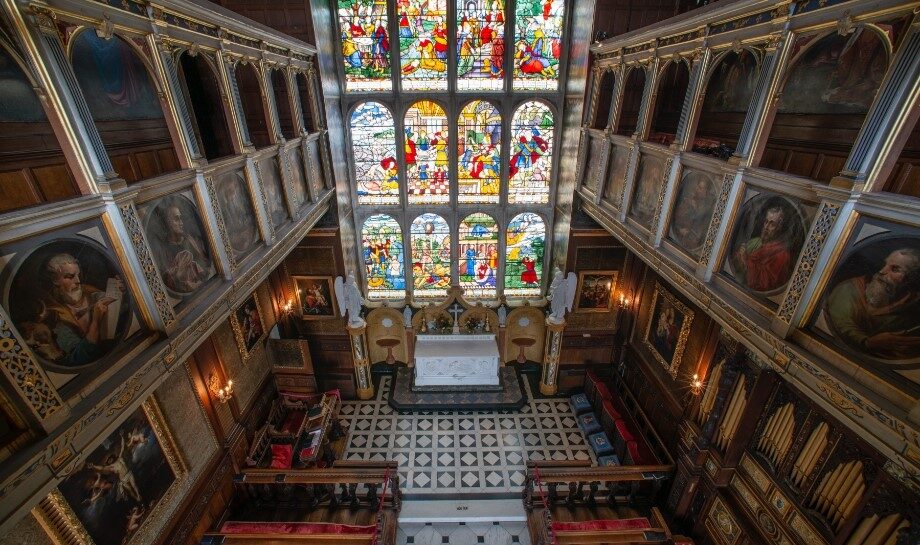

The stained glass window, showing Old Testament scenes, was made in 1610 by the glass-painters Richard Butler of Southwark, ‘Lewis Dolphin, a French painter’ (probably Louis Dauphin) and Martin van Bentheim of Emden, Holland. The scenes depicted, starting at the top and looking from left to right, are as follows: Visit of the Angel to Abraham; Moses in the bulrushes; Solomon and the Queen of Sheba; Jacob’s dream; Jonah and the whale; Passover of the Israelites; Samson and Delilah; Abraham offering up Isaac; Naaman in the River Jordan; David and Goliath; Elisha raising the son of the Shunamite woman; and Elijah in the fiery chariot.
This area of the House was destroyed by the fire in 1835 that also took the life of the Ist Marchioness of Salisbury. At the time of the fire, engines had to travel from as far away as London, so it was some time before they reached Hatfield. However, the Chapel was miraculously saved when the intense heat melted the leaden water tanks in the attics. Simultaneously, the wind changed direction and torrential rain began to fall, so the flames were extinguished before any more damage could be done. The fire was driven back and only the West Wing was destroyed.
Following its miraculous survival, the Chapel was remodelled between 1869 and 1877 by the 3rd Marquess, although the gallery retains its original portraits by Rowland Bucket of apostles and evangelists in the roundels under each arch. The old high pews were removed during the remodelling, while the screen, dado and white marble altar were installed. The organ was added and Giulio Taldini, who was responsible for the decoration in the Marble Hall, was commissioned to design and paint the front of it.